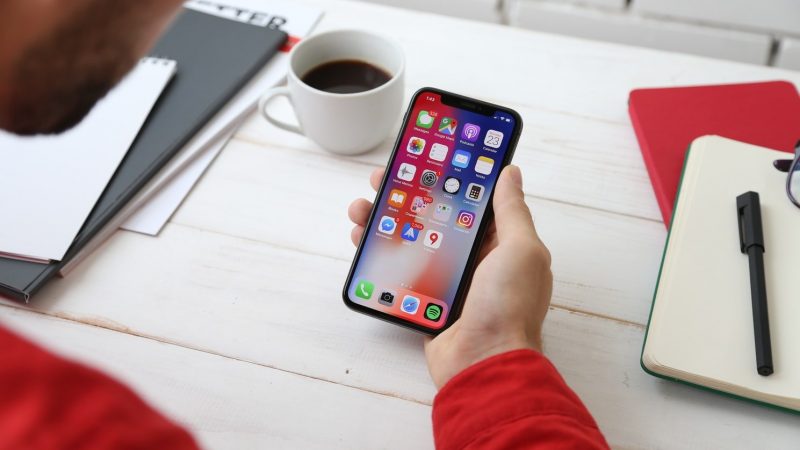Apps are around us. They are excellent business solutions irrespective of the intent they are used for.
Applications are predominantly made by businesses for customers. They serve as a great way to boost sales because it is easier to interact with the customer base through a handy app.
Apps development is becoming extremely crucial for selling products because of the dominance of smartphones for interacting with the Internet. All this brings us to the important question – how to make an app?

Is it hard to make an app? How much does it cost to build it? These questions are also relevant in 2020.
Creating an app is not an easy process and a laborious task. This can be a tricky and confusing adventure. This post intends to help you figure out the important steps from start to finish.
What Are the Steps to Make an App in 2020?
1. Generate an idea about your future app
Everything begins with an idea. Applications are not exclusion. Sketching your app ideas with a pen and paper will help to make the idea tangible. This will help you to determine how your application will work and what features it will have.
At this initial stage, you don’t need special tools to sketch your app idea. Start sketching with a simple pen, listing the features, use checklists, to-do-lists, and the tools for roadmapping your ideas.
You may draft your ideas and possible features separating them into two groups: must-haves and nice to have. If you need more detailed prioritization, try to apply more structured prioritization techniques and methods, such as the MoSCoW method or the 2×2 matrix.
Thinking about your future application, you will probably want it to be as lean and mean as possible. You will be able to realize it in a Minimum Viable Product (MVP), it’s first and simplest version. Focusing on what matters most, you will speed up your app development process and make it more resilient against setbacks.
2. Do market research
Sometimes developers simply skip market research, even though it’s an important part of making their product. Doing research upfront, you will be able to save time and effort down the line.
Before creating an app, ask yourself some significant questions:
- What do your potential clients want? What are their needs?
- What are the competitors in the marketplace?
- What is the charge for the app?
- What’s a good business model?
Effective market research will save you from making many early mistakes because you will be able to validate assumptions and assess the needs of potential customers. Based on this research you will easily define the challenges your app solves and will make an app that serves its users better.
3. Create mockups
A mockup is a rough sketch of your app’s layout. It also includes flow and user interfaces. Making mockups before you start to create the app is more beneficial.
Mockups don’t contain detailed UI elements, exact positioning of UI elements, special effects, and complex color schemes. They are aimed to show you what your app looks like, without distracting you with unnecessary things. In fact, this is functional instead of an aesthetic approach to the app’s design.
The mockup should also describe your app’s flow and interactions. You can also create a functional-technical design next to the mockup. You ill be able to create annotations in your mockup software or prepare a text document that explains how the app works.

4. Focus on graphic design
At this stage, your project is taking shape and your next step is to care about graphic design for your app. The design should include visual details, graphic effects, image assets, sometimes motion design, and animations.
You can act yourself with available graphics templates or hire a professional graphic designer. Such a professional can deliver results 100x greater than you, even if you have some skills.
However, if you believe in your own strength, do not discover continents. Use any design template to save time and then customize it. Do not also forget about copyright and licensing when using someone else’s original work. You can not just copy and apply things you find on the internet.
5. Create a landing page
Marketing is what app developers often overlook and simply ignore. You can create a great application but it does not mean that people will find it. How to find and discover your app? Building a landing page for your app is the answer.
It will help you to connect with potential app users early on before the app has been launched. The landing page should include a clear headline with a brief introductory paragraph, explainer video optionally, screenshots or mockup, call to action, a breakdown of app features and benefits, etc. Such a page will serve as a central point that you can lead people to, in case they are interested in learning more about your product.
In 2020, app developers see their App Store page as the key channel to market their apps. However, there are many other marketing channels that can bring in app installs.
6. Use Xcode and Swift to make the app
You’ve created mockups, the app’s design, and taken the first steps in marketing your app. After you’ve laid this groundwork for your app, it’s time to care for building the app itself.
Building iOS apps can be done with Xcode and Swift. Xcode IDE provides everything you need to make an iOS app from a project manager, code editor, debugging tools to documentation, and interface builder. Swift is an appropriate programming language to build iOS.
When data (photos or social media posts) is built in the app, it is uploaded to the cloud and stored in a database. The app keeps local copies of that data, updating them whenever new data comes in.
7. Launch it in the App Store
You’ve built the app and now it is time to launch it in the App Store. The process of publishing is rather simple:
- You have to register for an Apple developer account.
- Notice the app’s title and metadata
- Upload the latest app build
Apple will review your app, following the guidelines, and approve it if everything is ok. The app will be published live, allowing people to download it.

What’s next?
However, the work doesn’t stop after publishing your app. Everything has only just begun.
You should gather some early adopter feedback and go back to the drawing board to improve your product. It is time to make extra market research, improve mockups and designs, and develop new features. This is an iterative process.
Promoting the app is also a crucial stage. You can start it even before you launch your app. Generate some buzz before the launch to hit the ground running when you actually launch!
User feedback for constant improving
User feedback is an essential point for making an app. Follow the user’s experience, and their feedback, to improve your app.
- Gather quantitive data with analytics
- Practice surveys and interviews to get real data
- Talk to your users regularly
- Build personal connections, for example, send personal emails
After arranging those feedback sessions, you will be able to identify interactions in your app. Compare your expectations against real-world results. List potential improvements, and fix the items that need fixes.
Final thoughts
Wrapping it up, we can add that no creative work has ever been done by following a step-by-step template. Now you know the consistent steps for building your application, and implementation of those steps is what counts in making a successful app. Keep making progress, and gaining insights. Happy app making!





